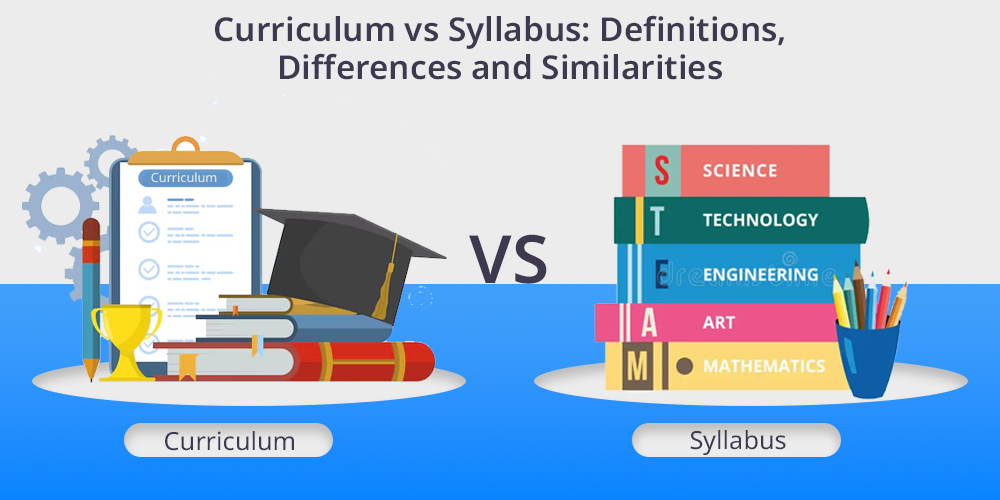
Have you ever wondered what is the difference between curriculum and syllabus?
In education, the curriculum and syllabus are the most important components.
A syllabus gives specific details about a course or subject while a curriculum is a broad framework that describes the objectives and organization of educational institutions and programs.
In order to deliver high-quality instruction every school adheres to a curriculum and syllabus. Sometimes curriculum and syllabus are often used together to denote some educational programs that align with the educational institutes.
In India curriculum was set by the state education department, local school department, and national education departments such as the National Council of Education Research and Training (NCERT) and National Curriculum Framework (NCF).
The syllabus of schools varies according to the state schools or national schools but follows the same guidelines and educational structure.
Contents
What is a Curriculum?
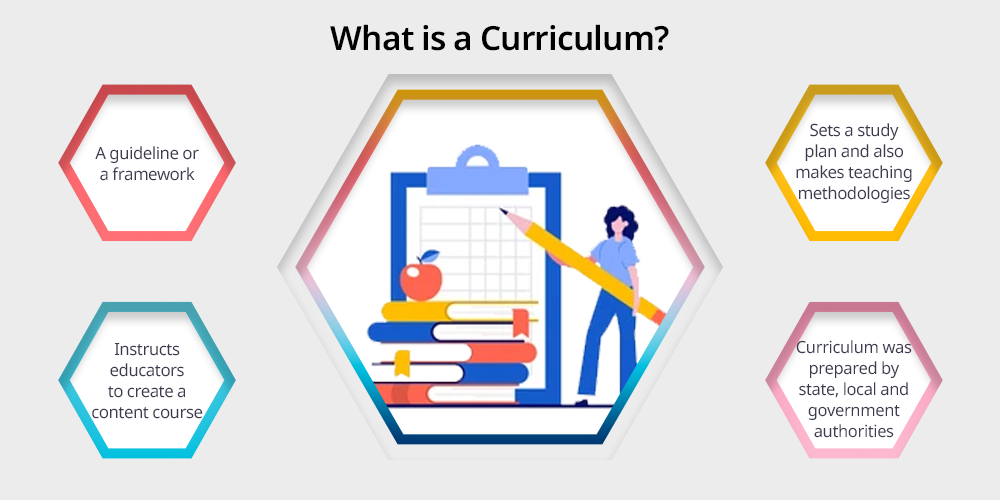
A curriculum can be defined as a guideline or a framework that instructs educators to create a content course or structure of the program.
The curriculum sets a study plan for the content and also makes teaching methodologies that help to make the education system more smoother. A student must be taught by using the directions of curriculums.
In India, the education system curriculum was prepared by state, local and government authorities such as NCF, and NCERT. One of the major aims of the curriculum is to enhance the teaching learning process in educational institutes.
Choosing the right curriculum for children is very essential in providing them with quality education and helps in fostering their minds to meet the needs of the 21st century.
Purpose of Curriculum
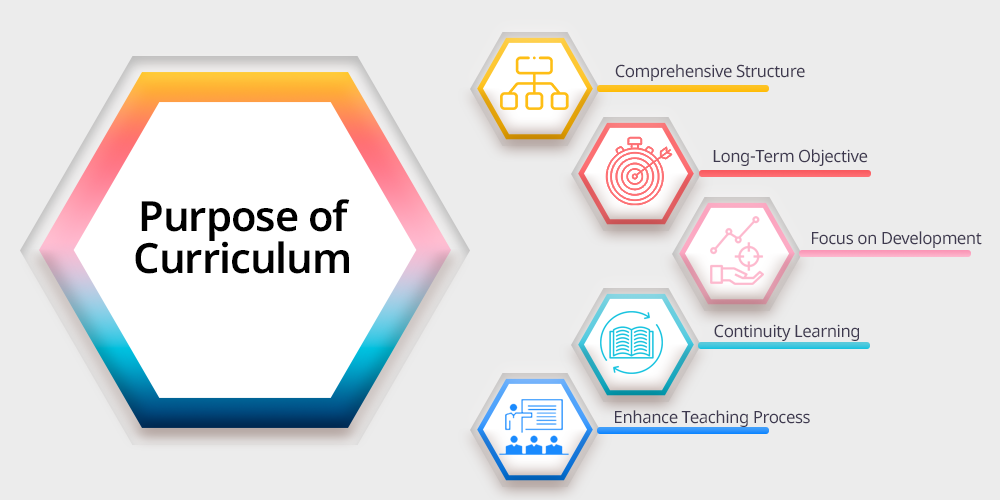
The curriculum is very essential to provide a insights of the programs and teaching methods.
In every institution, the curriculum helps in providing a comprehensive guide to the completion of the programs. Curriculum changes frequently according to the educational requirements or reforms.
Below you can check the purpose of the Curriculum:
- Comprehensive Structure: A comprehensive framework provides insights into educational programs. The curriculum creates multidisciplinary, grade levels, and implements teaching techniques that allow to make a systematic overview of the program.
- Long-Term Objective: With the help of learning programs the curriculum establishes long-term goals. This establishes a requirement that all educational institutions must adhere to.
- Focus on Development: The curriculum helps in developing emotional, and social skills as well as boosting cognitive development of children. By following the same educational structure it enhances the learning speed and boosts physical capabilities irrespective of any challenges.
- Continuity Learning: The curriculum makes sure that every educational subject should be considered related to each other. It helps in understanding the common themes of subjects which promotes continuity of learning.
- Enhance Teaching Process: The curriculum enhances the process of teaching and learning. The curriculum helps in teaching methods by including modern terminologies that allow productive learning outcomes.
What is a Syllabus?
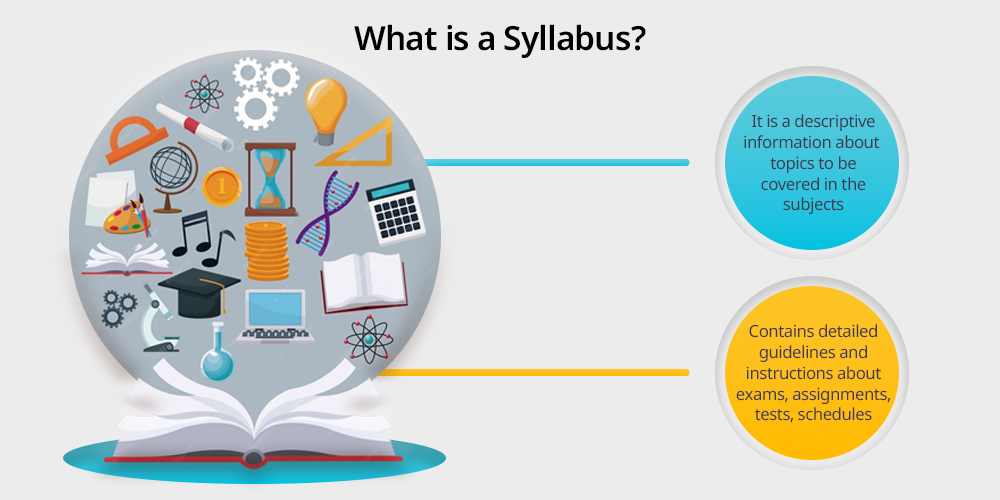
Syllabus is a descriptive information about topics to be covered in the subjects. Syllabus describes what topics and information are to be taught to students.
The syllabus contains detailed guidelines and instructions about exams, assignments, tests, schedules and so on.
Sometimes people also represent curriculum as a framework of syllabus that provides a foundational structure of topics and subjects.
Not only in traditional schooling, syllabus is even used in digital literacy as it provides a descriptive details about the topics to be covered in the subjects.
Purpose of Syllabus
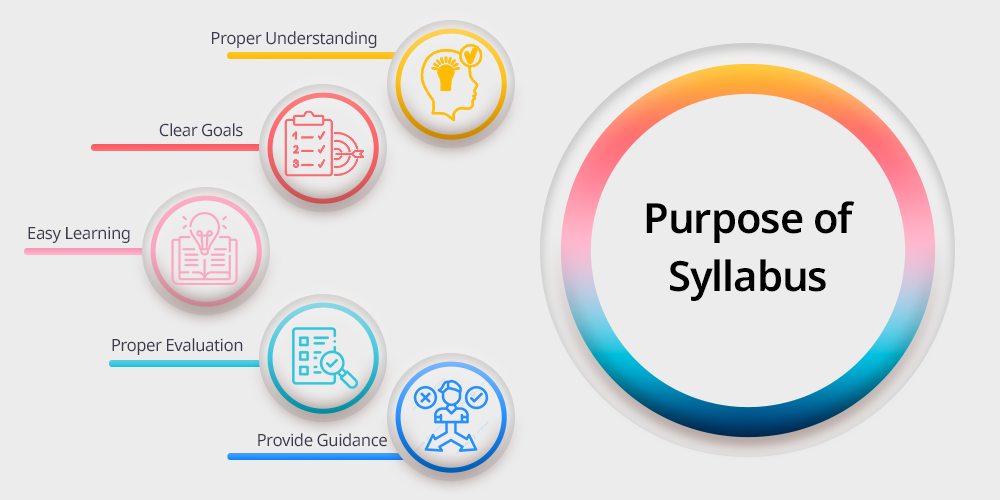
A clear and comprehensive framework of the subjects and topics that correspond with the curriculum is provided by the syllabus which is crucial.
The topics that teachers will teach their students are summed up in the syllabus.
Below is the purpose of the Syllabus:
- Proper Understanding: With the help of a syllabus students can accurately comprehend the topics that will be covered. Teachers and learners can begin by consulting the syllabus which offers a comprehensive guide of the course content.
- Clear Goals: The syllabus sets up clear objectives that improve students learning objectives and help them mastering the subjects which boost students learning goals.
- Easy Learning: By providing a comprehensive framework for the entire subject the syllabus improves understanding. Following the syllabus helps in understanding the subject and increases productivity.
- Proper Evaluation: Syllabus also helps to evaluate the performance of applicants. Through this students can decide which subjects should be discussed first and which are given greater importance. This facilitates evaluating both higher and lower weights.
- Provide Guidance: The syllabus provides a detailed analysis of the examination of the subjects which aids students in giving appropriate guidance. Students can determine what to study and which topics to cover first by comprehending the syllabus.
Difference Between Curriculum and Syllabus
Curriculum and Syllabus are both different terms but are correlated to each other. A curriculum is a structure of overall content whereas a syllabus is a detailed summary of topics to be covered in subjects.
Both are changeable in nature and can change according to educational needs and reforms.
Below you can check the difference between a Curriculum and a Syllabus:
| Basis of Difference | Syllabus | Curriculum |
| Definition | Provide focus on a specific course or subject and outline the topics, content, and learning goals | Focuses the entire educational program and sets broader educational objectives and goals |
| Structure | Syllabus is more detailed and provides a detailed plan for subjects and topics | The curriculum is comprehensive and follows the structure to guide the overall design and structure of learning activities |
| Settings | The syllabus of schools varies according to the state schools or national schools and prepared by local authorities. | Curriculum was set by the state education department, local school department, and national education departments such as NCERT and NCF. |
| Creation | Syllabus creates a proper understanding of the topics to be covered in subjects. | The curriculum creates multidisciplinary, grade levels, and implements teaching techniques that allow to make a systematic overview of the program. |
| Nature | Syllabus can be change frequently or in a academic year. | Curriculum doesn’t change quickly until new reforms or policies. |
| Guide | Provides a roadmap for students and teachers | Guides curriculum development and implementation |
Similarities Between Curriculum and Syllabus
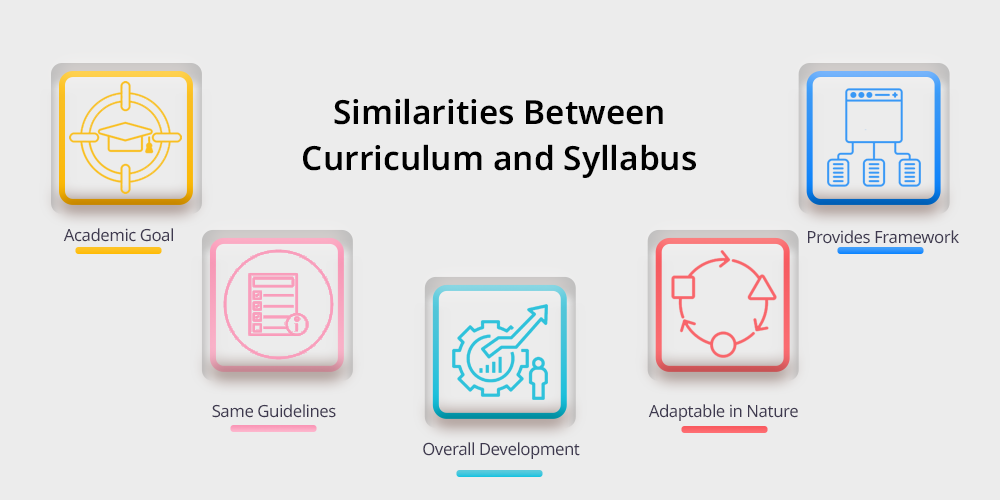
Curriculum and syllabus are co-related to each other because both are essential elements of education. However, both curriculum and syllabus are different concepts.
Curriculum outlines the structure of educational programs and syllabus provides detailed information about the subject and courses. Both curriculum and syllabus share some similarities that aligns with the academic session.
Curriculum also sees the implementation of co-curricular activities in schools and educational institutes.
Below you can check the similarities between Curriculum and Syllabus:
- Academic Goal: Both curriculum and syllabus share the same similarities in terms of facilitating educational goal. Both curriculum and syllabus aims to enhnace teaching learning experience and boost the productivity among students.
- Same Guidelines: Both curriculum and syllabus follows same guidelines and provide framework and structure for teachers and students. The curriculum focuses on developing the overall structure of the entire program whereas syllabus focuses on developing the structure of the topics in the subject.
- Overall Development: Both the curriculum and the syllabus emphasize how a childs personality develops and grows overall. Both have produced an organized curriculum that enables students to finish their studies in a systematic manner.
By emphasizing various facets of childrens learning cognitive emotional and social development this also encourages students holistic development.
- Adaptable in Nature: The curriculum and syllabus are both flexible and can be altered in response to reforms and needs. Both can be modified if it didn’t meet the expectations of both teacher and students.
- Provides Framework: Both curriculum and syllabus acts as a framework for the education. The curriculum provides structure of the entire content program or teaching method. Same syllabus provides framework for topics of the subjects to be covered in the entire teaching learning procedure.
Conclusion
Despite their frequent interchangeability curriculum and syllabus have different but related functions in the educational system.
The curriculum ensures a coherent learning experience across a range of subjects by offering a broad framework that describes the general objectives organization and methodologies of an educational program.
The syllabus on the other hand provides a thorough outline for a particular course outlining the subjects to be studied the methods of assessment and the learning goals.
Both curriculum and syllabus are essential in effective teaching and learning process. Both curriculum and syllabus provides a comprehensive growth of students, leading them through their academic paths and improving their overall educational experience
